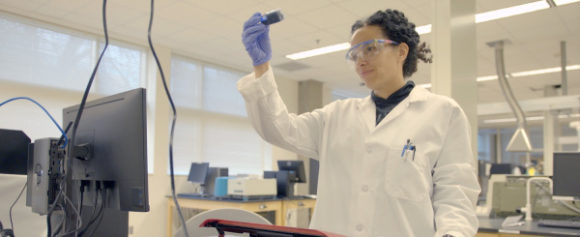Watching the documentary Picture a Scientist, directed by Sharon Shattuck and Ian Cheney, for New Scientist, 22 June 2020.
What is it about the institutions of science that encourages bullying? That pushes a young geologist down an Antarctic hillside, or blows grit in her eyes? That tells a black chemist to straighten her hair before applying for a job? Or swipes vital equipment from the lab (already tiny and ill-appointed) of a promising geneticist?
As a PhD student on her first research trip to Antarctica, the geologist Jane Willenbring was first insulted, then bullied, then physically abused by her supervisor. The second scientist featured in this film, Raychelle Burks, a black chemist, has been regularly mistaken for the cleaning staff and challenged when she uses the staff car park. The third, geneticist Nancy Hopkins, had her ground-breaking work on zebra fish constantly disrupted by colleagues who seemed to think they needed her equipment more than she did.
Willenbring deplores a culture which advantages those who put up and shut up. PhD students depend upon their supervisors for opportunities and funding. They are painfully aware that an ill-disposed supervisor can foreclose all avenues of professional advancement. It pays them, therefore, to be tolerant of their supervisor’s “quirks” — to see no evil in them, and speak no evil of them. In this dynamic of patron and client, the opportunities for abuse are rife.
In spite of this, all three women achieved success in their careers. Alongside her fulltime career, including her role as director of the Scripps Cosmogenic Isotope Laboratory, Willenbring champions science education for girls. Raychelle Burks, an analytical chemist based in Washington, is quickly becoming the most visible chemist of her generation, and a STEM celebrity on YouTube. Hopkins initiated a sea change in the institutional culture of MIT, creating an example of best practice that institutions around the world https://www.newscientist.com/article/mg18424676-400-its-a-womans-world/ are beginning to follow. This is not a bleak film, by any measure. And the women, for sheer charisma and smarts, are an inspiration and a delight.
At the same time, one is left with a profound sense how much good science may be lost, when accomplished scientists have to spend time fighting for their right to come to work at all. Willenbring studies the responses of the earth’s crust to climate change. Burks develops cheap, easy forensic tests for war zones and disaster relief. Hopkins researches cancer. All three have become passionate advocates for the welfare of women in science; all three insist that they would much rather have been allowed to do their jobs. “The time-suck is killing,” says Burks.
Picture a Scientist is not just about individual scientists. It is also about how institutions work, and about how science can improve our understanding of them. The idea that institutions embody bias and prejudice is resisted by managers. It took Nancy Hopkins years to convince MIT that its female staff were being crammed into campus’s smallest laboratories. She was met, not with conspiracy, but with incredulity. After all, no one at a managerial level at MIT had ever decreed that women should be treated this way! Managers were reluctant to even consider the evidence Hopkins presented. She herself feared that she would gain a reputation for being “difficult”.
In 1999, MIT and its provost Robert Brown decided to own and set about correcting the examples of sexual discrimination Hopkins and her fellows female colleagues at MIT http://web.mit.edu/fnl/women/women.html brought to light.
Moss-Racusin spells out the moral for deans and provosts. “The time has passed for intuition,” she says. “We have the evidence, the data.”
Hopkins regrets the research time she sacrificed to transforming MIT. “Such a waste of time and energy,” she sighs, “when all you wanted was to be a scientist.”
Watching this film, I cannot agree. There is nothing trivial — and certainly nothing easy — about making science measurably better.

